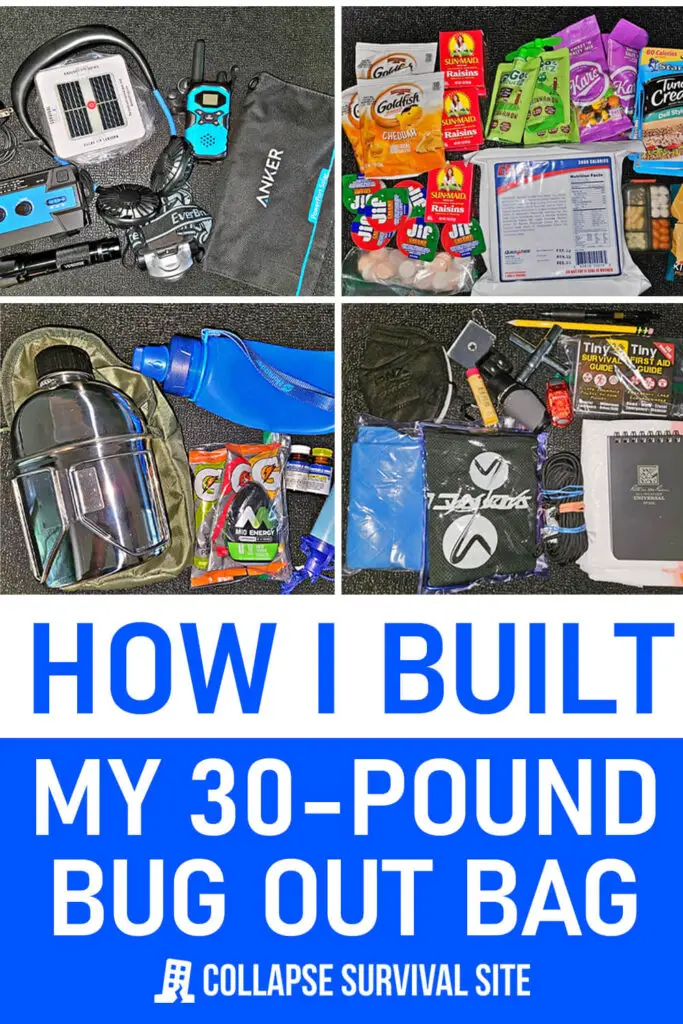Estimated reading time: 12 minutes
I have a long and complicated relationship with bug out bags. I built my first bug out bag over 10 years ago, and I was proud of the fact that it weighed less than 30 pounds. But over time, I kept thinking of things I had forgotten.
For example, I forgot to pack a stove, so I found a Solo Stove and put it in my bag, adding 1.4 pounds to its weight. Later, I realized my only light was a flashlight, so I got a small camping lantern, which added another 1.5 pounds. Later still, I realized I had only packed enough food to provide 1200 calories per day, so I put more food in the bag, adding even more weight…
Eventually, I weighed my bug out bag again and realized it was over 40 pounds! I tried making it lighter, agonizing over each item and whether to remove it or not. It seemed like every single item was crucial. I finally gave up and left the bag as it was, but it always bothered me that my bug out bag was so heavy.
Then last year, I decided to go hiking with it. I quickly realized that my muscles, and especially my knees, couldn't handle a 40-pound bag for long. To get in better shape, I started exercising on an elliptical machine with a 40-pound rucksack, and that helped a lot.
Want to save this post for later? Click Here to Pin It On Pinterest!
But still, I knew I would have a hell of a time carrying 40 pounds through the woods all day. A bug out bag should only weigh about 15% of your body weight, and since I weighed about 200 pounds, that meant I had to get the bag down to 30 pounds.
So, I started from scratch. I took everything out of my bag and built a brand-new bug out bag. This time, I wasn't just pickier about what to include, I tried to find lighter versions of things. For example, instead of packing a Solo stove, I packed a foldable stove. That one change took off nearly a pound.
In the end, I had a bug out bag that weighed just 30.4 pounds (I know I said 30 in the title, but I decided to round down). Here's everything I put in it:
Light / Electronics
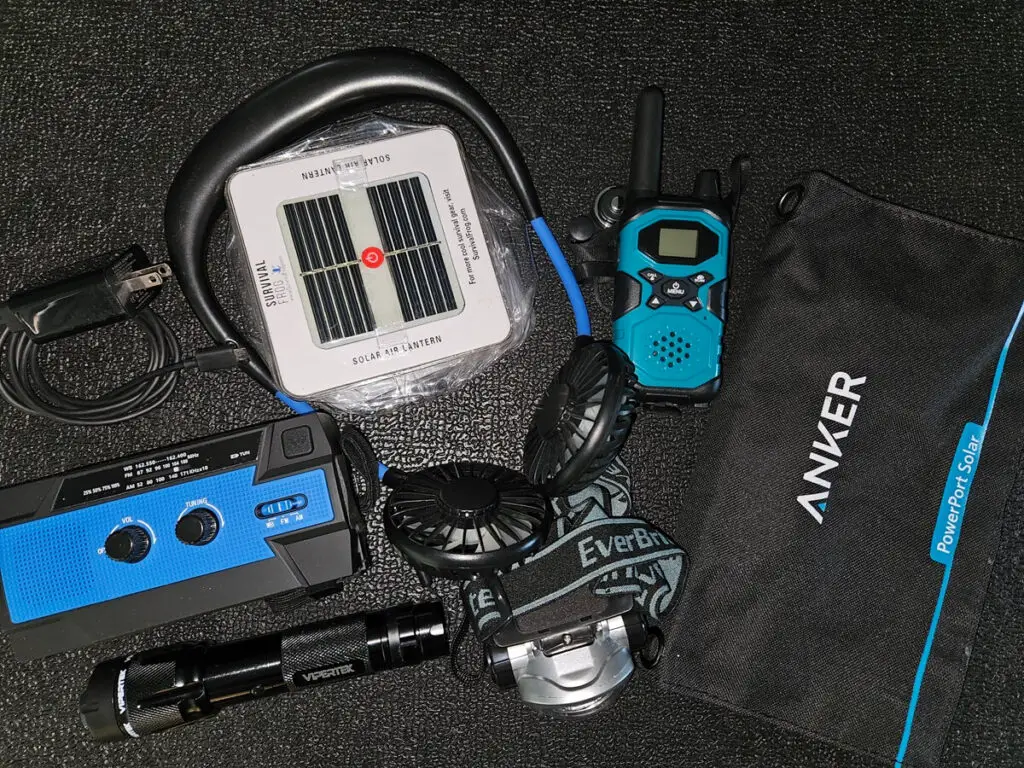
- Charger – This will charge my phone and anything with a USB-C connection.
- Flashlight stun gun – If a mugger catches you off guard, this light can be used to stun them and give you a chance to escape.
- Hand-crank radio – Important for getting news updates about whatever disaster you're escaping. It includes a solar panel, but that is kind of a gimmick. The hand-crank is more effective.
- Head lamp – A head lamp is incredibly useful if you need your hands free for pushing through brush, cooking food, building a shelter, etc. This one can also emit a red light, which will draw less attention.
- Neck fan – This is a must-have in the summer time.
- Portable solar panel – This can be unfolded and hung on the outside of my bag so it can charge my devices while I'm hiking.
- Solar lantern – I also clipped this to the outside of my bag so it can charge up during the day. If fully charged, it can last almost all night.
- Walkie talkie – These have a limited range. I mainly have it so I can contact my kids if we somehow get separated while hiking.
Rain / Shelter
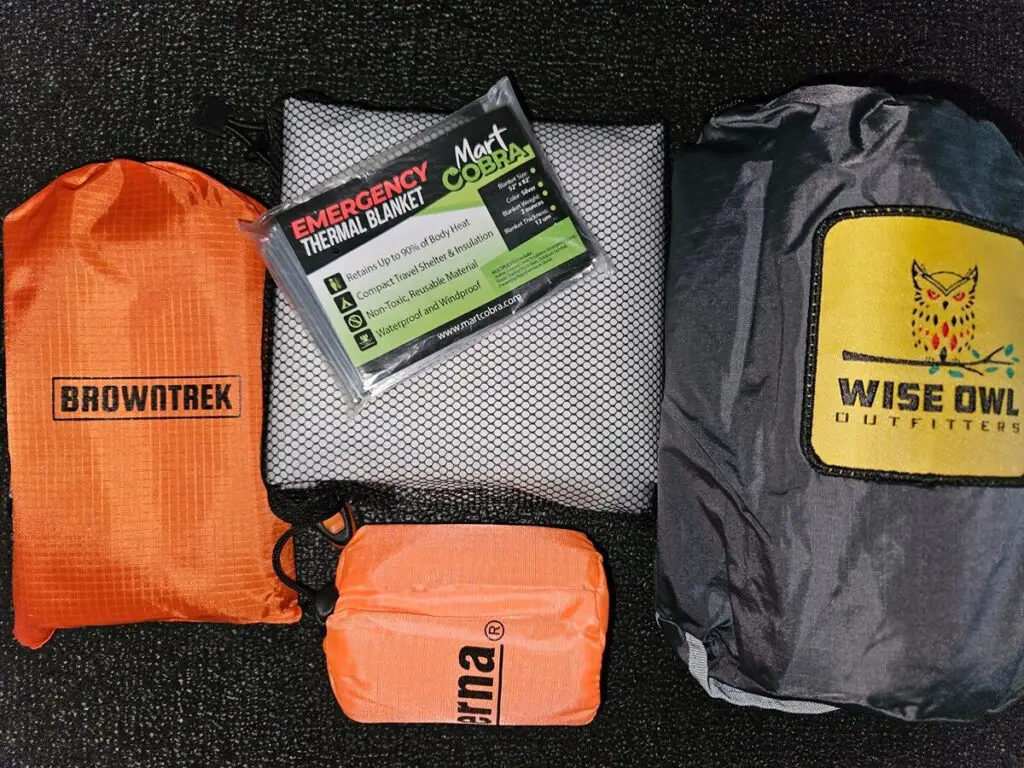
- Bivvy – This emergency sleeping bag is made with Mylar to help retain body heat.
- Ground cloth – This comes with stakes so it will stay in place.
- Mylar blanket – I already have a bivvy, but I added this just in case it's a colder night than usual.
- Poncho – A must-have in case it starts raining.
- Rain fly – Originally, I had packed a small tent, but it was just too heavy. I decided that I could just construct my own shelter using a rain fly.
Fire Starting Kit
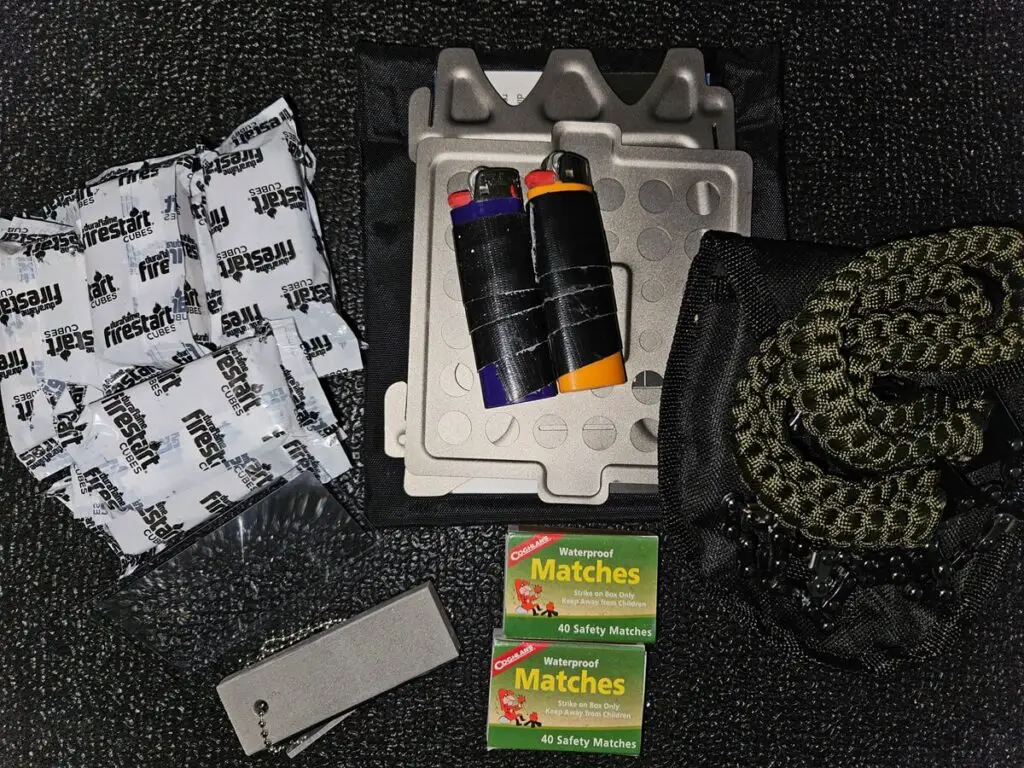
- Durastart cubes – If you're experienced at building fires, you might not need these, but they make it a lot easier to get a fire going.
- Foldable stove – This only weighs 7.3 ounces and can be used to boil water or cook something in a tiny skillet.
- Fresnel lens – As long as you have good tinder, it's easy to start a fire with one of these.
- Lighters – I wrapped some gorilla tape around these since it can be used to patch holes, among other things.
- Magnesium fire starter – With this, you don't have to worry about it getting wet or running out fuel.
- Matches – Be sure to get waterproof matches.
- Pocket chainsaw – I love this thing! It's just a saw chain with two handles, making it really easy to cut up some firewood.
- Tinder – Unless it's been raining, I should be able to find some good tinder, but I included these just in case.
Toiletries
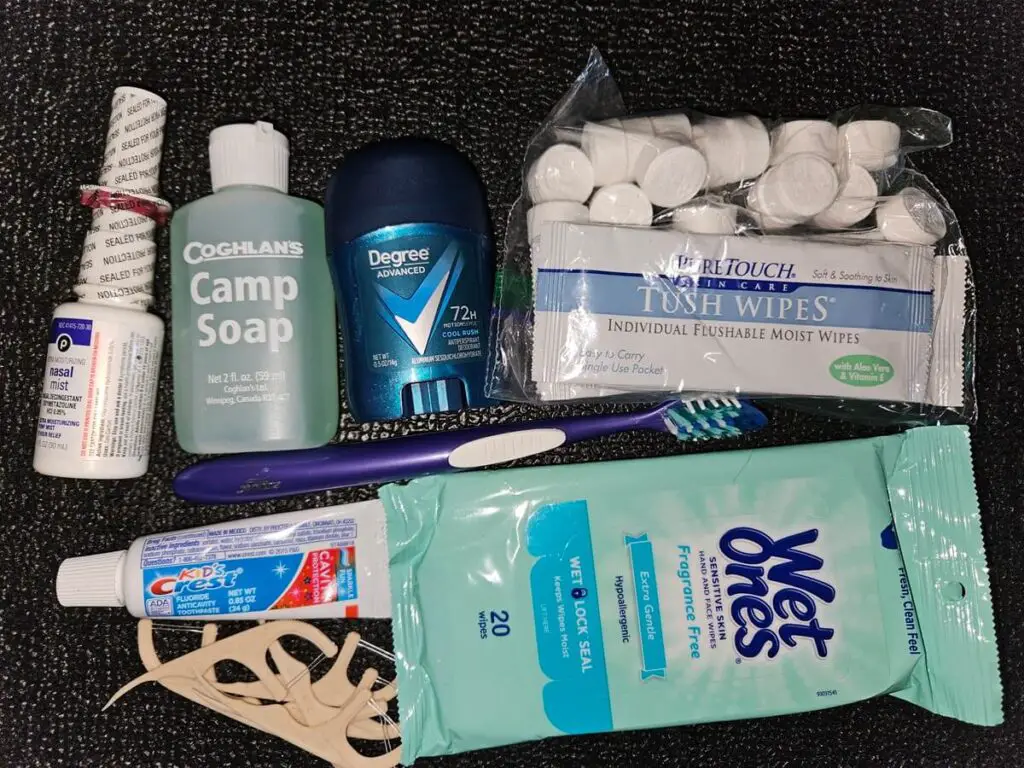
- Camp soap – Really easy way to wash your hands.
- Deodorant – Some people will say this isn't essential, but I hate when my armpits start sweating really badly, and this only weighs half an ounce.
- Hand sanitizer – Especially important during a pandemic.
- Nasal spray – Not everyone needs this. I just like to have it because my nose gets stuffy sometimes.
- Toilet paper tablets – I love these! Just add a little water and unfold it, and you have a little cloth you can use for cleaning or wiping.
- Toothbrush and toothpaste – Not crucial for surviving 72 hours, but it's nice to have a clean mouth, and they travel size ones don't weigh much.
- Tush wipes – These are good if water is in short supply and you don't want to waste any on a toilet paper tablet.
- Wet wipes – Good for general cleaning.
Clothing
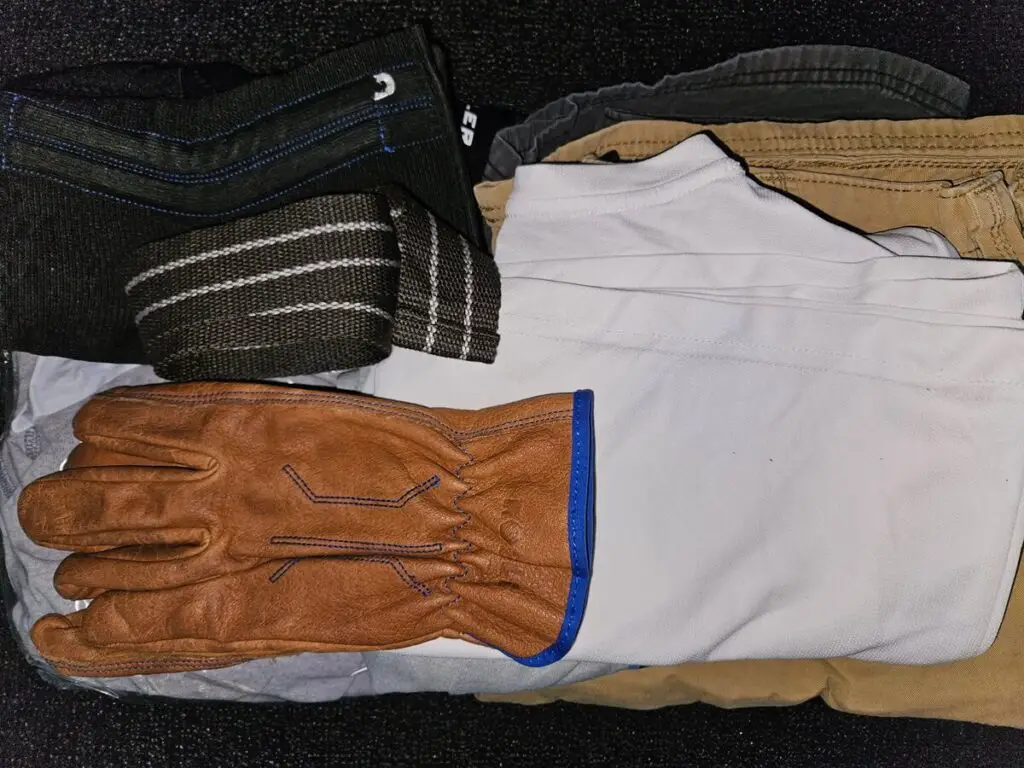
- Bandana – These are great because they have so many uses.
- Belt – These also have many uses, but I mainly need them to keep my pants up.
- Hiking boots – I don't count these toward the weight of my bag since they're on my feet, but I included it in the list to remind you that you won't want to be hiking all day while wearing regular shoes. Keep some hiking boots near your bug out bag.
- Knee braces – If you have bad knees or are middle-aged or older, these are a must-have.
- Leather gloves – If you're pushing through brush or handling anything hot or sharp, it's nice to have a good pair of gloves.
- Shirts – Pack at least 2 shirts so you'll have a total of three.
- Shorts – You could wear the same shorts or pants every day, but you'll want to have extra if they get wet or torn.
- Socks – Having wet feet all day sucks. Pack a few extra pairs of socks.
- Underwear – As with shorts and pants, you could wear the same pair for several days, but you'll sleep better in clean clothes.
Note: This fall, I'll update my bag to include long-sleeve shirts, pants, and thermal underwear.
Hydration Kit
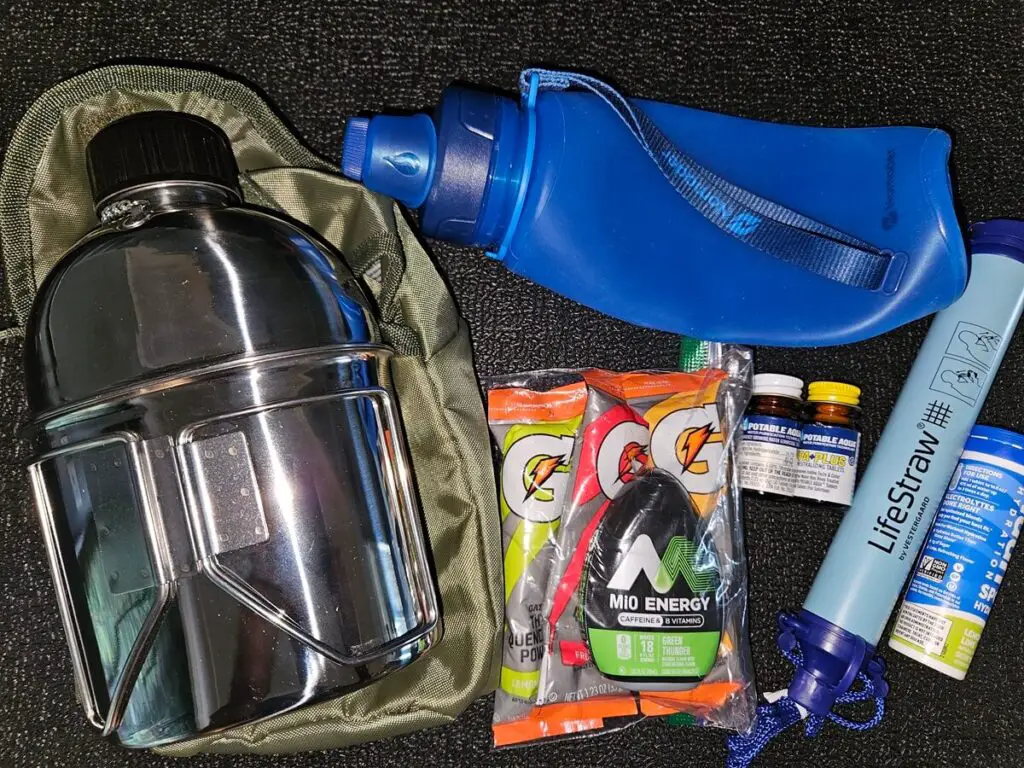
- Canteen – This can be used to boil water, and it even comes with a little cup that you can use to make tea or soup.
- Collapsible water bottle – When unfolded, this will hold up to 22 ounces of water.
- Electrolyte tablets – If you're hiking all day, you're going to get dehydrated. These will help you retain fluids.
- Mio energy – Technically, this won't keep me hydrated because it's full of caffeine, but I'd have a hard time getting through the day without it.
- Survival straw – I can use this with my collapsible water bottle. I thought about buying a LifeStraw Go, but they're kinda pricey.
- Water purification tablets – It's a good idea to have more than one way to purify water.
Note: I'd love to fill my CamelBak with water and bring it along, but it's just too heavy. Fortunately, there are lots of creeks and streams where I live. If you live in a dry area, you should bring along some water.
Food

There's enough here for me to eat 2400 calories a day for 3 days.
- Applesauce pouches (3 x 70 = 210 calories)
- Emergency rations (3690 calories) – These don't taste that great, but they're packed with calories and nutrients and will keep you going.
- Fiber tablets (27 = 3 for each meal) – There's not a lot of fiber in these foods, so the tablets are crucial if you don't want to spend all morning trying to poop.
- Gatorade packets (3 x 130 = 390 calories) – These provide quick energy and help keep me hydrated.
- Goldfish packets (3 x 130 calories = 390 calories)
- Peanut butter go cups (6 x 122 calories = 732 calories) – Peanut butter has one of the best weight-to-calorie ratios.
- Pill case with daily pills – Every day, I take baby aspirin, magnesium, and a multivitamin. The pill case keeps them dry and organized.
- Raisins (6 x 90 calories = 540 calories)
- Snack bars (6 x 90 calories = 540 calories)
- Sunflower seeds (140 calories) – Something to snack on throughout the day.
- Trail mix (3 x 240 = 720 calories)
- Tuna creations (3 x 80 calories = 240 calories)
Note: Be sure to replace your food at least every six months so it doesn't go bad.
Med Kit

Most of these are pretty self-explanatory.
- Acetaminophen
- Alcohol wipes
- Aspirin
- Bandage strips
- Burn gel packets
- Butterfly bandages
- CAT tourniquet – In case you're on your own, this can be used with one hand.
- Cleansing wipes
- Famotidine
- Gauze roll
- Gauze swab
- Gloves
- Hydrocortisone cream
- Ibuprofen
- Iodine prep pads
- Israeli bandage
- Loperamide – This one is often overlooked, but it's very important. If someone gets sick and has diarrhea, they can get dehydrated very quickly. Loperamide can be a literal lifesaver.
- Medical tape
- Moleskin – After hiking all day, you're liable to develop blisters on your feet. Moleskin can treat or prevent them.
- Potassium iodide – Important for a nuclear radiation emergency.
- Q-tips
- Quikclot pad
- Safety pins
- Scissors
- Sting relief pads
- Triangular bandages
- Tweezers
- Wound pad
Note: I put the painkillers and antacids in a pill case.
Miscellaneous

- Chapstick – Even if you don't use chapstick, it can still be very useful.
- Cooling towel – Soak this in water and wipe your face and neck. Feels nice on a hot day.
- Face mask – Good to have if a pandemic has occurred.
- Map – Get a detailed, topographical map of your county or state.
- Monocular – I have this clipped to the outside of bag.
- Paracord – This has all sorts of uses, especially when building a shelter.
- Pen and pencil – You may need this to take notes or leave notes for someone.
- Rite-in-rain notepad – This paper literally can't get wet. Works best with a pencil.
- Runners light – I have this clipped to the outside of my bag. If I'm walking by a road at night, drivers will be able to see me.
- Shammy cloth – These can soak up lots of water and dry very quickly.
- Signal mirror – This allows you to signal planes for help if you're lost.
- Sillcock key – If you're in an urban area and need water, this will turn on outdoor spigots that don't have a valve. Technically, you'd be stealing water from the building, so it's only for an emergency.
- Sunblock – Forgetting to bring this could be disastrous. A bad sunburn will not only cause terrible pain, it will wear you out fast.
- Tiny Survival Guides – These can be unfolded and contain all sorts of useful survival and first aid information. They come with a mini magnifying glass so you can read everything.
- Trash Bags – Not just for trash. There are literally dozens of other uses.
- Zip ties – Useful for building shelter or emergency repairs.
Other Items
I also have these, but I don't count them toward the weight of my bag because I keep them in my pockets, holster, or around my neck:
- Compass – This is crucial if you're in an unfamiliar area.
- Fixed-blade knife – Useful for cutting rope, carving wood, making kindling, preparing food, etc.
- Glock 17 – You don't necessarily have to bring a firearm, but there are a lot of desperate people pouring out of the cities, you might need it to fend off robbers.
- Insect repellent – Your day will be much more pleasant if you aren't covered with bug bites.
- Keys
- Mace – If you don't want to carry a firearm, mace is another good option.
- Multitool – There are countless reasons a multitool could be useful.
- Phone
- Wallet
- Whistle – This is a way to call for help or find one another if you and your family members get separated.
Final Thoughts
So there you have it! That is the latest iteration of my bug out bag. I'll update it again in the fall when the weather gets cold, and keeping it to 30 pounds will be a challenge.
What items did I forget? What would you do differently? Let me know below.
Like this post? Don't Forget to Pin It On Pinterest!

